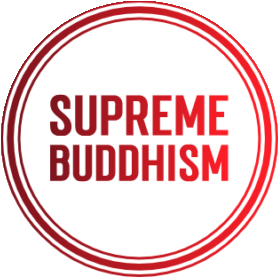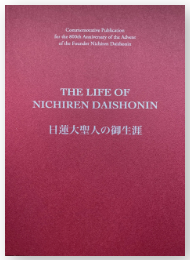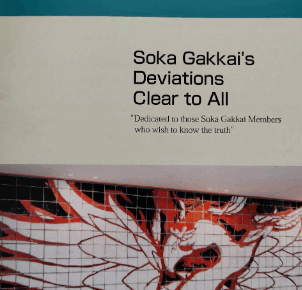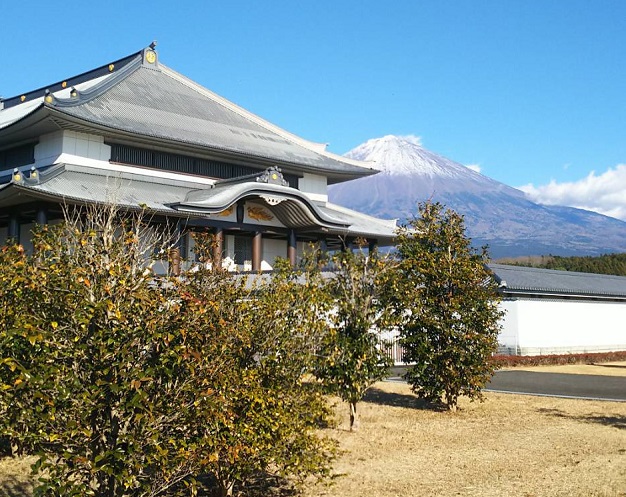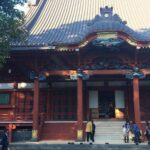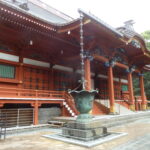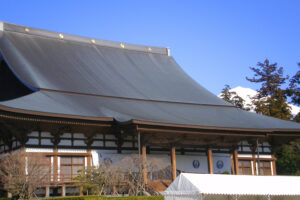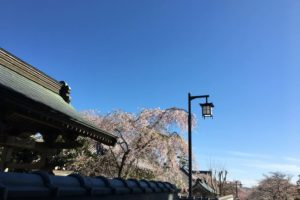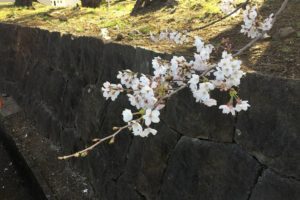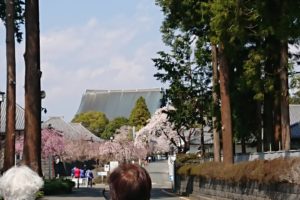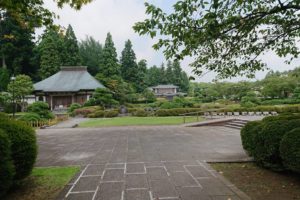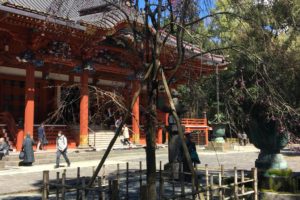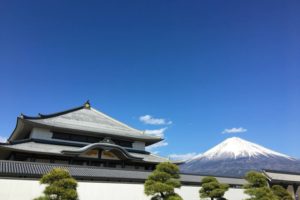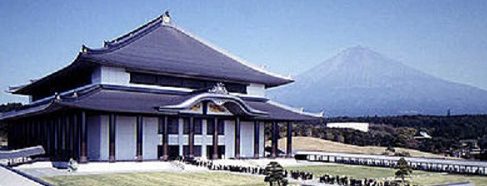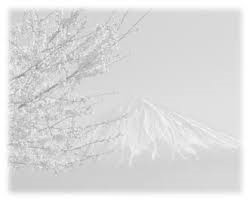Contents
1. About the “Letter to Shimoyama” (Shimoyama go-shosoku)
This Gosho was written in the sixth month of the third year of Kenji (1277), when Nichiren Daishonin was 56 years of age. He was residing at Mt. Minobu and wrote this letter on behalf of his disciple Inaba-bo Nichiei. The Daishonin wrote this letter to Nichiei’s father, Shimoyama Hyogo Goro Mitsumoto, who was the steward of Shimoyama.
There is only one other example of a letter that Nichiren Daishonin wrote on behalf of a disciple or follower. It was the “Letter of Petition from Yorimoto” (Yorimoto chinjo”), written on the twenty-fifth day of the sixth month of the same year – the third year of Kenji (1277). The Daishonin wrote it on behalf of Shijo nakatsukasa-no-jo Yorimoto, his disciple in Kamakura, and addressed it to Ema, who was Yorimoto’ s lord. In these two writings, Nichiren Daishonin gave strict instructions to the parents and superiors of his disciples and believers, in an effort to protect them.
2.Background of This Gosho
Shimoyama is approximately ten kilometers northeast of Minobu, where Nichiren Daishonin lived his last years. The steward of the region (the lord of the manor) was named Shimoyama Hyogo Goro Mitsumoto, and he was a strong Nembutsu believer. He constructed a worship hall for Amida. His son, on his father’s behalf, recited the Amida Sutra there everyday for four a or five years. Around that time, Nichiren Daishonin came to reside in Minobu. The son heard about Nichiren Daishonin’s reputation and promptly went to one of his sermons. Thereafter, he renounced his faith in the Nembutsu and became a disciple of Nichiren Daishonin. He received the priestly name of Inaba-bo Nichiei.
Thus, Nichiei discontinued his recitation of the Amida Sutra and began to recite the Lotus Sutra and chant Daimoku everyday. Nichiei’s father, Shimoyama Hyogo Goro, who fervently practiced the Nembutsu, wrote his son a scathing letter asking him to explain why he no longer chanted the Nembutsu of the Amida Sutra. Nichiei reported this to Nichiren Daishonin and expressed his desire to take this opportunity to shakubuku his father. Therefore, on behalf of Nichiei, Nichiren Daishonin denounced the slanderous conduct of the father and urged him to uphold the Lotus Sutra. This is the nature of the Gosho, “Letter to Shimoyama.”
3.Major Discourse
The initial passage of this Gosho reads:
The relative superiority of the Lotus Sutra over the Amida Sutra is not merely single or double-fold. The difference between them is as clear as the heavens and the earth and as the beautiful clouds and the muddy marshes. (Gosho, p. 1137)
The reasoning behind Nichiei’s decision to embrace True Buddhism is presented here.
The Daishonin denounced the Amida Sutra by pointing out that, when the Amida and Lotus sutras are compared, the superiority of the Lotus Sutra and the inferiority of the Amida Sutra are obvious. For this reason, Nichiei discarded the Nembutsu that he had heretofore upheld. He embraced the Lotus Sutra and became Nichiren Daishonin’s disciple.
Hereafter, I will follow the passages of the “Letter to Shimoyama” and explain their general significance.
If you do not follow the times, if you are not aware of the capacities, if you are not mindful of the nation, and if you do not understand that all is dependent on the previous and subsequent propagation of the Law, then it will all be in vain, even if you propagate it while undergoing difficult, physical trials.
(Gosho, p. 1138)
In embracing and propagating True Buddhism, we must be mindful of the teaching, the capacity, the time, and the country. Furthermore, one cannot attain enlightenment without an understanding of the sequence of the propagation of the doctrine, the selection of what is to be retained and what is to be discarded, and the evaluation between truth and heresy.
A son of a temple where correct Mahayana doctrines are upheld must not praise or form close ties with a priest or nun who resides in a Hinayana temple, even if that priest or nun is his parent. No matter what, practice this Law. (Gosho, p. 1138)
We must not follow one who upholds faith in an inferior doctrine, even if he is our parent. In other words, we must not unequivocally follow every instruction given by our parents. We must, in fact, prioritize the True Law and practice it. Ultimately, we must lead our parents to embrace True Buddhism.
Erroneous religions are the source of the various misfortunes manifested in this world. Faith forms the foundation of the lives and daily existence of the practitioners. If they believe in inferior or erroneous doctrines, they will unfortunately receive the appropriate effects.
If we sincerely care about our precious parents, family members, and friends, then, even if we incur some temporary wrath or misunderstanding from them, we must teach them about True Buddhism, for their sake, and eliminate their source of suffering. Indeed, this represents the true spirit of shakubuku and our sincere feeling following passage from the Gosho: of compassion for them, as shown in the following from the Gosho.
If one befriends another person but lacks the mercy to correct him, one is in fact his enemy…. One who rids the offender of evil is acting as his parent.
(Gosho, p. 577; MW-2, p.212-213)
4.Denunciation of All Sects
The “Letter to Shimoyama” continues:
The Buddha foresaw the future. He specified the individuals and the parts of his doctrines that were to be propagated and the time for such propagation after his passing, during the first one-thousand years of the Former Day of the Law, the next thousand years of the Middle Day of the Law, and the ten-thousand years and eternity of the Latter Day of the Law,
(Gosho, p. 1140)
In this Gosho passage, the Daishonin described the propagation process of Buddhism.
There is a chronology consisting of the Former, Middle, and Latter Days of the Law. During the first five hundred years of the Former Day of the Law, Mahakashyapa and Ananda propagated the Hinayana doctrines, the lowest and most elementary of the Buddhist teachings. In the next five hundred years of the Former Day of the Law, Nagarjuna and Vasubandhu expounded the provisional Mahayana, which was superior to the Hinayana. During the Middle Day of the Law, T’ien-t’ai and Dengyo propagated the theoretical teachings of the supreme doctrine, the Lotus Sutra. Thus, during each respective period, these individuals led the people and enabled them to benefit as a result.
The Latter Day of the Law is the time when Shakyamuni’s Buddhism loses its power and its benefits. The attitude of the people towards Buddhism deteriorates. It is a time when advancements and developments in government and civilization lead to intensified greed, anger, stupidity, and arrogance among the people. During this period, people grow increasingly stressed and distorted.
The True Buddha Nichiren Daishonin made his advent into this Latter Day of the Law, to inscribe the Dai-Gohonzon and to bring salvation to all mankind in this world.
In addition, the Latter Day of the Law marked a time of the rise and decline of the human race. It was characterized by internal insurrections and external invasions and by the occurrence of numerous natural disasters. This is described in the same Gosho:
Shan-tao wrote that, in the Latter Day of the Law, not even one in a thousand people could attain the Pure Land through the Lotus Sutra. Honen urged people to discard, close, ignore, and abandon all sutras except the Pure Land teaching. The Zen sect sought to eliminate the Lotus Sutra by promoting “a special transmission independent of word and writ.” Since these three evil sects have together made their advent into this nation, our land has already been abandoned by the gods Bonten and Taishaku; Nitten (god of the sun) and Gatten (god of the moon); and the Four Heavenly Kings. The protective deities have become sworn enemies. The gods of the heavens are looking down upon this nation with rage, and the gods of the earth cause the ground to shake with tremendous indignation. Comets traverse the sky, and earthquakes move the four seas.
(Gosho, p. 1150)
Unprecedented natural disasters occurred, as a result of people slandering the True Law of the Lotus Sutra and upholding faith in erroneous sects, such as Nembutsu and Zen. This caused the deterioration of the people and the nation.
One actual manifestation of the effects of such behavior was the exile of three emperors in Japan at the time. In the Jokyu Rebellion (of 1221) the imperial court fought against the feudal military government of the shogun. One year thereafter, Nichiren Daishonin was born. He came into this world to save all mankind, throughout the ten thousand years and all eternity of the Latter Day of the Law.
Nichiren Daishonin clearly explained the Law through comparisons between truth and heresy. He expounded the doctrines from the shallow to the profound and from the provisional to the true. Through such relative comparisons, the Daishonin sincerely promoted the True Teachings of the Lotus Sutra and revealed the Buddhism of the Sowing. He taught that the True Buddhism of the True Buddha of the Latter Day of the Law is the only means that can save the entire nation and society at the very foundation.
5.Remonstrations (Shakubuku)
In my expression of appreciation to the nation, I have remonstrated three times. Since my admonitions have not been accepted, I have decided to retreat to the mountains. Olden texts teach that one must take his leave if his advice is not heeded after three attempts. I have followed the instructions set forth in these olden texts and have entered these mountains.
(Gosho, p. 1153)
Nichiren Daishonin’s first remonstration was his submission of the Rissho ankoku-ron (“On Securing the Peace of the Land Through the Propagation of True Buddhism” ) to Hojo Tokiyori (Lord Saimyoji), the most influential figure in the Kamakura feudal government of the time.
His second remonstration consisted of his warnings of an impending attack by a foreign power in eleven Gosho writings. In particular, prior to the Tatsunokuchi persecution, Nichiren Daishonin was hit on the forehead by Hei no Saemon-no-jo Yoritsuna, with the fifth volume of the Lotus Sutra. In response, the Daishonin raised his voice and admonished him for his foolish behavior, saying it would topple the pillar of Japan.
The Daishonin’s third remonstration took place on the 8th day of the 4th month of the 11th year of Bun’ei (1274), after his release from exile in Sado on the 14th day of the 2nd month of the same year. He met with Hei no Saemon-no-jo Yoritsuna and admonished him for the unreasonable behavior and mistakes committed by the feudal government. When he was asked about the invasion of the Mongols, he predicted that they would attack before the end of the year. Thereafter, Nichiren Daishonin followed the olden saying that one should retreat into the mountains if no one takes heed of his remonstrations on three occasions.
This was a brief summary of the Gosho, “Letter to Shimoyama.”
Nichiren Daishonin experienced continuous persecutions during his lifetime. He propagated True Buddhism because he cared for his country and he wanted to save all mankind. He was persecuted because he denounced the slanders against the Law, which were the source of all misfortunes.
In Japan at the time, there were tremendous natural disasters, great fires, incredible floods, horrendous famines, and terrible epidemics. People were writhing in misery. Seeing the suffering and listening to the painful cries of the people, Nichiren Daishonin knew that now was, indeed, the time to save the nation and the people. He revealed the fundamental cause for the ubiquitous occurrence of calamities and offered a resolution to them. He remonstrated repeatedly.
In the Gosho, “Establishing the Four Bodhisattvas as the Object of Worship,” the Daishonin wrote:
Those who call themselves my disciples and practice the Lotus Sutra should all practice as I do.
(Gosho, p. 1370; MW-3, p.298)
We must sincerely uphold Nichiren Daishonin’s spirit to remonstrate against the national authorities.
This Gosho, “Letter to Shimoyama,” is a discourse on shakubuku. Each one of us must also carry out the shakubuku activities that are expounded in this Gosho. It is essential for each individual to tell another person and to propagate Nichiren Daishonin s Buddhism in this way.
In five years, we will celebrate the “750th Anniversary of the Revelation of the Truth through the Writing of the Rissho Ankoku-Ron.” Let us sincerely carry out our Buddhist practice, giving consideration to each of our unique, individual circumstances. Let us achieve even a fraction of the compassion and the selfless devotion of Nichiren Daishonin, who offered his life for the sake of the Law, as he passionately denounced slander and sacrificed himself for the salvation of all mankind.
Nichiren Daishonin stated:
Since I am constantly mindful of this, I say to my disciples: I have already achieved my objective. I cannot contain my joy. It is difficult to be born into this world as humans, and yet it can be easily destroyed. For eternal kalpas in the past, many lives have been lost for insignificant things, but none for the sake of the Lotus Sutra.
(Gosho, p. 1151)
We have the good fortune to have encountered the True Buddhism of Nichiren Daishonin in this lifetime. Through the Daishonin’s teachings, we have been able to compare the truth and heresy of religions, and we have been able to understand that the source of the misfortunes occurring around the world lies in heretical religions. Now is indeed the time to offer ourselves our hearts, our bodies, and our time to the Gohonzon, so that we can all be of best service to the Buddha to achieve his objective.
